 December 19, 2019 John E. Ross, KD8IDJ, Editor
| ||||||
To Our Readers: This is the final edition of The ARRL Letter for 2019. The newsletter will be on a holiday hiatus until January 9, 2020. ARRL Audio News will be on break until January 10, 2020. ARRL Headquarters will be closed on December 25 and on January 1, and there will be no W1AW bulletin or code practice transmissions on those days. A reminder that Straight Key Night (SKN) is January 1, 2020 (UTC) -- starting on New Year's Eve in North American time zones. We wish everyone a safe and enjoyable holiday season. ARRL Reshapes Podcast Offerings for 2020 In conjunction with the launch of its new On the Air magazine, which is aimed at those just beginning their journey in amateur radio, ARRL is reconfiguring its podcast lineup. Heading up the new schedule will be a free companion podcast to the bimonthly On the Air magazine. The monthly On the Air podcast will take a deeper look into select features and projects from the magazine. Each month, host and On the Air Editorial Director Becky Schoenfeld, In addition to the podcast, ARRL Product Development Manager Bob Inderbitzen, NQ1R, will curate a free On the Air blog featuring content from the communicators and makers who are the driving force of amateur radio today. The blog will highlight opportunities and activities available to new licensees. The On the Air blog is intended as an entry point into the world of amateur radio for those seeking original voices and perspectives. Readers will be invited to take part in the conversation by sharing their stories and experiences. ARRL's current So Now What? podcast will cease production in January, as the full complement of On the Air content is rolled out. The catalog of So Now What? episodes is available for listening or downloading. In addition, The Doctor is In podcast, which has served more-experienced amateurs since 2016, will conclude its 4-year run with its Hosted by QST Editor Steve Ford, WB8IMY, Eclectic Tech will highlight technical topics involving amateur and non-amateur technology, offer brief interviews with individuals involved in projects of interest to amateurs, and include practical information of immediate benefit to today's hams. The Doctor is In co-host Joel Hallas, W1ZR, is selecting some of his favorite podcast episodes for re-broadcast in the interim between the end of production for The Doctor is In and the debut of Eclectic Tech. The complete The Doctor is In archive is available on the ARRL website. Hallas will continue to answer questions about amateur radio in QST's "The Doctor is In" column. The ARRL Audio News podcast will continue to provide a weekly summary of news and activities within the amateur radio community. FCC Formally Adopts Proposals to Remove Amateur 3 GHz Band, Invites Comments The FCC's plan to remove "existing non-federal secondary radiolocation and amateur allocations" in the 3.3 - 3.55 GHz band and relocate incumbent non-federal operations already has begun drawing fire. The Commission formally adopted the Notice of Proposed Rulemaking (NPRM) in WT Docket 19-348 on December 12 and invited comments on appropriate "transition mechanisms" to make the spectrum available for mobile and fixed wireless broadband use. ARRL "By proposing to delete the existing non-federal secondary allocations from the 3.3 - 3.55 GHz band, we are taking an important initial step towards satisfying Congress's directives and making as much as 250 megahertz of spectrum potentially available for advanced wireless services, including 5G," the FCC said in the Introduction to its NPRM. Some comments arrived before formal adoption of the NPRM, which was circulated ahead of the December meeting. Kevin Milner, KD0MA, the secretary/treasurer of the Ski Country Amateur Radio Club in Colorado, argued that the club's equipment cannot be re-channeled below 3.4 GHz, and the club is seeking relocation costs. Devin Ulibarri, W7ND, told the FCC that amateur networks in the current band cannot move easily into other amateur allocations because there is no readily available commercial equipment to support the bandwidth, the FCC said in a footnote. Currently, the entire 3.1 - 3.55 GHz band is allocated for both federal and non-federal radiolocation services, with non-federal users operating on a secondary basis to federal radiolocation services. With respect to amateur operations, the FCC invited comments on whether sufficient amateur spectrum exists in other bands that can support the operations currently conducted at 3.3 - 3.5 GHz. The 3.40 - 3.41 GHz segment is earmarked for amateur satellite communication. The FCC said if non-federal licensees are relocated to the 3.1 - 3.3 GHz band, it proposes to have them continue to operate on a secondary basis to federal operations, consistent with current band allocations. Also at its December 12 meeting, the FCC considered another NPRM in WT Docket 19-138 that would "take a fresh and comprehensive look" at the rules for the 5.9 GHz band and propose, among other things, to make the lower 45 MHz of the band available for unlicensed operations and to permit "cellular vehicle-to-everything" (C-V2X) operations in the upper 20 MHz of the band. The FCC is not proposing to delete or otherwise amend the 5-centimeter amateur 5.650 - 5.925 GHz allocation, which would continue as secondary. The NPRM, if approved, would The Amateur Radio Emergency Data Network (AREDN) has offered its voice in challenging the FCC proposals on both 9 and 5 centimeters, saying their adoption would "eliminate our use of the most-effective resource hams have to build its networks." "The AREDN Project is able to leverage low-cost commercial devices solely because they are designed to operate on adjacent allocations," AREDN said on its website. "Moving to other allocations would be difficult if not impossible without a complete redesign, manufacture, purchase, and installation of new custom amateur hardware and software...raising the price out of reach for the typical ham." FCC Proposes Largest-Ever Fine for Unlicensed Broadcasting The FCC has proposed fining an alleged pirate broadcaster in the Boston, Massachusetts area more than $450,000. According to the FCC, Gerlens Cesar, who operated Radio TeleBoston, used three separate transmitters for his broadcasting enterprise, resulting in three separate violations of the law. "The Commission proposed imposing the statutory maximum forfeiture amount for each of these three apparent violations," the FCC said in a Notice of Apparent Liability (NAL) released on December 12. Under the Communications Act, it is illegal to transmit above certain "Such pirate radio broadcasting can interfere with licensed communications including public safety transmissions," the FCC said. The FCC said Cesar apparently simulcasts Radio TeleBoston on three unauthorized transmitters on two different frequencies. "His operation thus had the potential to cause interference in various locations in and around Boston and at different channels on the FM dial," the FCC said. "As a result of the scale of this operation, its potential impacts, and its continuous nature, the Commission proposed the maximum penalty for all three transmitters." The FCC reported receiving complaints from Boston-area residents of an illegal station operating at both 90.1 and 92.1 MHz. One complaint identified Cesar as the operator of Radio TeleBoston. The FCC said it had issued multiple warnings. -- FCC Media Release The Doctor Will See You Now! The Doctor will open the mailbag for the last time in the final (December 19) episode of the ARRL The Doctor is In podcast. "Best of The Doctor is In" episodes will be released every other week until a new podcast, Electic Tech," debuts in February.
Every 2 weeks since 2016, your host, QST Editor-in-Chief Steve Ford, WB8IMY, and the Doctor himself, Joel Hallas, W1ZR, have discussed a broad range of technical topics and answered listeners' questions. Enjoy ARRL The Doctor is In on Apple iTunes, or by using your iPhone or iPad podcast app (just search for ARRL The Doctor is In). You can also listen online at Blubrry, or at Stitcher (free registration required, or browse the site as a guest) and through the free Stitcher app for iOS, Kindle, or Android devices. If you've never listened to a podcast before, download our beginner's guide. AztechSat-1 CubeSat to Demonstrate Intra-Satellite Communication The AztechSat-1 CubeSat, which traveled to the International Space Station (ISS) earlier this month on the 19th Space-X Commercial Resupply Services (CRS-19) mission for NASA, will listen for emergency messages in the 439 MHz range and retransmit them for amateur radio operators to copy on its 437.300 MHz downlink using the Winlink protocol, once the CubeSat has been placed into orbit. The "The primary objective of the project is to establish communication with the commercial GlobalStar satellites in order to improve data transmission to Earth," a UPAEP news release said. AztechSat-1 will create a saturation map of 435 - 438 MHz by listening for the whole orbit and returning captured data to the ground station on the 437.300 MHz amateur radio downlink (9k6 GMSK or FSK) plus a 1600 MHz GlobalStar link. Emergency messages received via Globalstar to the AztechSat-1 ground station will be shared on the project's website. A certificate will be available for amateur stations receiving the emergency message(s) and reporting these for confirmation by the AztechSat-1 team. Details are on the AztechSat-1 website and on the IARU Amateur Radio Satellite Communication page. The project is part of NASA's CubeSat Launch Initiative, which offers universities, high schools, and nonprofit organizations the opportunity to fly small satellites. "Innovative technology partnerships keep down the cost, providing students a way to obtain hands-on experience developing flight hardware," a NASA report said. NASA explained, "The investigation demonstrates communication within a satellite network in low-Earth orbit. Such intra-satellite communication could reduce the need for ground stations, lowering the cost and increasing the number of data downloads possible for satellite applications." The K7RA Solar Update Tad Cook, K7RA, Seattle, reports: It's been 36 consecutive days with no sunspots. Geomagnetic conditions were quiet until a minor solar wind stream hit on December 18, driving the planetary A index to 13 from the low single digits earlier in the week.
Because of weak solar activity, the ARRL 10 Meter Contest last weekend was rather slow. QST's "The World Above 50 MHz" editor Jon Jones, N0JK, in Kansas said he encountered a strong opening to Argentina and Chile on Sunday. He said the propagation mechanism appeared to be sporadic E. More details in the weekly bulletin on December 20. Sunspot numbers for December 12 - 18 were 0, 0, 0, 0, 0, 0, and 0, with a mean of 0. The 10.7-centimeter flux was 70.5, 68.9, 70.3, 71, 70, 70.5, and 70.2, with a mean of 70.2. Estimated planetary A indices were 4, 4, 3, 5, 1, 2, and 13, with a mean of 4.6. Middle latitude A index was 3, 3, 2, 5, 1, 2, and 12, with a mean of 4. A comprehensive K7RA Solar Update is posted Fridays on the ARRL website. For more information concerning radio propagation, visit the ARRL Technical Information Service, read "What the Numbers Mean...," and check out K9LA's Propagation Page. A propagation bulletin archive is available. Monthly charts offer propagation projections between the US and a dozen DX locations. Share your reports and observations. Just Ahead in Radiosport
See the ARRL Contest Calendar for more information. For in-depth reporting on amateur radio contesting, subscribe to The ARRL Contest Update via your ARRL member profile email preferences. Volunteers Celebrate 98th Anniversary of ARRL Transatlantic Tests at W1AW A group of radio amateurs gathered on December 11 at W1AW to mark the 98th anniversary of the successful ARRL Transatlantic Tests. On December 11, 1921, a message transmitted by a group of Radio Club of America members at 1BCG in Greenwich, Connecticut, was copied by Paul Godley, 2ZE, in Scotland. Reporting on the accomplishment, ARRL Secretary Kenneth B. Warner, 1EH, declared "Excelsior!" Clark Burgard, N1BCG -- who lives in Greenwich and styles his call sign as "n1BCG" to honor the original 1BCG -- was among those on hand at the Maxim Memorial Station.
"We completed a successful special event yesterday at W1AW commemorating the 98th anniversary of the Transatlantic Tests," Burgard recounted. "This was particularly important historically to amateur radio as it was originally organized by ARRL in 1921 to determine if low-power amateur radio stations using shortwave frequencies could actually be heard in Europe. Until then, it was thought impossible." Burgard pointed out that the 1921 event changed radio history, was covered in three issues of QST, and opened the door to the first two-way transatlantic tests a couple of years later. The 1921 transatlantic success marked the beginning of what would become routine communication between US radio amateurs and those in other parts of the world -- literally the birth of DX. NTIA Spectrum Manager Stephen Veader, N4DXS, SK Stephen Veader, N4DXS, of Dale City, Virginia, a major behind-the-scenes player in the effort that led to creation of amateur radio's 60-meter band in the US, died on November 5. An ARRL Life Member, he was 67. As a spectrum manager for the National Telecommunications and Information Administration (NTIA), Veader was deeply involved on the behalf of NTIA in the effort to secure a new amateur band at 5 MHz. According to Ross Merlin, WA2WDT, when it became clear that a proposal for a 15 kHz band would not be approved, Veader was Veader was active within the SHARES HF radio community as the representative for NTIA. A native of Boston, Veader was a US Air Force veteran. During his years at NTIA, he also provided regulatory guidance on the use of SHARES for federal and non-federal radio users. "Steve was a good friend to SHARES and to amateur radio," Merlin said. Veader was also an avid RTTY enthusiast and was active in many contests throughout the year. A service was held on November 15. -- Thanks to Ross Merlin, WA2WDT Bar Code Lead Developer George Laurer, K4HZE, SK The lead developer of the bar code system that became the now-ubiquitous Universal Product Code (UPC), George Laurer, K4HZE, of Wendell, North Carolina, died on December 5. He was 94. While an electrical engineer with IBM in North Carolina's Research Triangle Park in the early 1970s, Laurer led the effort to develop the Laurer also later patented one of the first handheld UPC scanners, according to his obituary. As The Washington Post reported, "The bar-code concept had originated in the 1940s, when N. Joseph Woodland designed a bull's eye-shaped system of concentric circles, inspired by the dots and dashes of Morse code." Woodland became a colleague of Laurer's at IBM, and Laurer considered him "the father of the supermarket scanning system." A native of New York, Laurer served in the US Army during World War II after being drafted while he was still a junior in high school. He graduated from the University of Maryland in 1951 and spent 3 decades working for IBM. Accounts describe Laurer as an inveterate tinkerer, even up to his final years. IBM never patented the bar code system, but made it publicly available in order to sell the associated hardware. In Brief...
Getting It Right! In the article, "Collegiate QSO Party 2018 and 2019 Plaque Recipients Announced," the 2018 second-place alumni low-power winner was incorrect. The winner was Frank J. Maynard, NF8M. Upcoming ARRL Section, State, and Division Conventions
Find conventions and hamfests in your area.
. .
Subscribe to...
Free of charge to ARRL members...
| ||||||
 W1BXY, will offer additional resources, techniques, and hints to help less-experienced radio amateurs to get the most from the magazine's content.
W1BXY, will offer additional resources, techniques, and hints to help less-experienced radio amateurs to get the most from the magazine's content.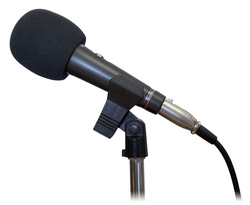 December 19 episode. Eclectic Tech, a new biweekly podcast designed to appeal to experienced amateurs, will launch in February.
December 19 episode. Eclectic Tech, a new biweekly podcast designed to appeal to experienced amateurs, will launch in February. plans to oppose the move. The amateur 9-centimeter allocation is 3.3 - 3.5 GHz.
plans to oppose the move. The amateur 9-centimeter allocation is 3.3 - 3.5 GHz.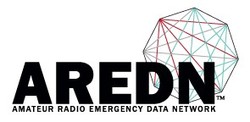 address the top 75 MHz of that amateur secondary band. Although no changes are proposed to the amateur allocation, an anticipated increase in primary use could restrict secondary amateur use.
address the top 75 MHz of that amateur secondary band. Although no changes are proposed to the amateur allocation, an anticipated increase in primary use could restrict secondary amateur use..jpg) low-power levels, defined within FCC Part 15 rules, without an FCC license.
low-power levels, defined within FCC Part 15 rules, without an FCC license. Sponsored by
Sponsored by 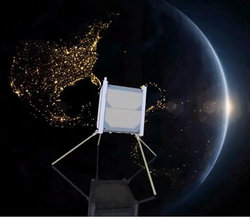 satellite is a project of Mexico's Universidad Popular Autónoma del Estado de Puebla (UPAEP). Aztechsat-1 is set for deployment from the ISS in late January.
satellite is a project of Mexico's Universidad Popular Autónoma del Estado de Puebla (UPAEP). Aztechsat-1 is set for deployment from the ISS in late January.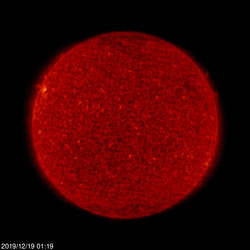 The average planetary A index for December 12 - 18 rose to 4.6, from 3.7 over the previous 7 days, while mid-latitude A index increased from 1.9 to 4. Predicted solar flux over the next 45 days is 70. The predicted planetary A index is 10, 8, and 8 on December 19 - 21; 5 on December 22 - January 4; 8 on January 5; 5 on January 6 - 8; 8 on January 9 - 10; 5 on January 11 - 13; 12 on January 14; 10 on January 15 - 17; 5 on January 18 - 31, and 8 on February 1.
The average planetary A index for December 12 - 18 rose to 4.6, from 3.7 over the previous 7 days, while mid-latitude A index increased from 1.9 to 4. Predicted solar flux over the next 45 days is 70. The predicted planetary A index is 10, 8, and 8 on December 19 - 21; 5 on December 22 - January 4; 8 on January 5; 5 on January 6 - 8; 8 on January 9 - 10; 5 on January 11 - 13; 12 on January 14; 10 on January 15 - 17; 5 on January 18 - 31, and 8 on February 1.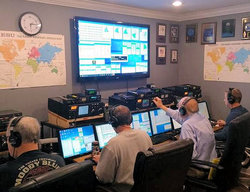
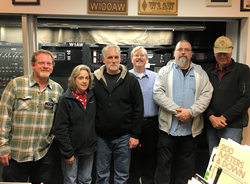
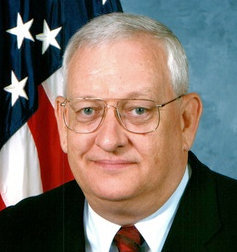 instrumental in fashioning the compromise that led to the authorization of the five discrete secondary channels radio amateurs have today, and other countries copied that template for their 5 MHz amateur allocations. Today, these spot frequencies serve as "interoperability channels" for federal and amateur stations to share in emergencies and exercises.
instrumental in fashioning the compromise that led to the authorization of the five discrete secondary channels radio amateurs have today, and other countries copied that template for their 5 MHz amateur allocations. Today, these spot frequencies serve as "interoperability channels" for federal and amateur stations to share in emergencies and exercises.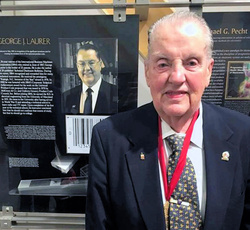 bar code system. The UPC, composed of 30 unique black bars and a 12-digit number, allows retailers to identify products and prices as they are scanned. It was used for the first time in a retail setting in 1974.
bar code system. The UPC, composed of 30 unique black bars and a 12-digit number, allows retailers to identify products and prices as they are scanned. It was used for the first time in a retail setting in 1974.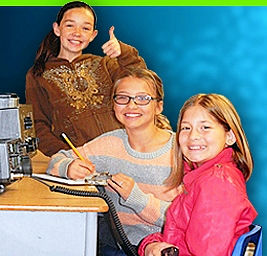 Kids Day is Saturday, January 4 The first Saturday in January is Kids Day -- the time to get youngsters on the air to share in the joy and fun that amateur radio can provide. Kids Day gets under way on Saturday, January 4, at 1800 UTC and concludes at 2359 UTC. Sponsored by the Boring (Oregon) Amateur Radio Club, this event has a simple exchange, suitable for younger operators: First name, age, location, and favorite color. After that, the contact can be as long or as short as each participant prefers. Kids Day is the perfect opportunity to open your shack door and invite kids over to see what amateur radio has to offer.
Kids Day is Saturday, January 4 The first Saturday in January is Kids Day -- the time to get youngsters on the air to share in the joy and fun that amateur radio can provide. Kids Day gets under way on Saturday, January 4, at 1800 UTC and concludes at 2359 UTC. Sponsored by the Boring (Oregon) Amateur Radio Club, this event has a simple exchange, suitable for younger operators: First name, age, location, and favorite color. After that, the contact can be as long or as short as each participant prefers. Kids Day is the perfect opportunity to open your shack door and invite kids over to see what amateur radio has to offer. 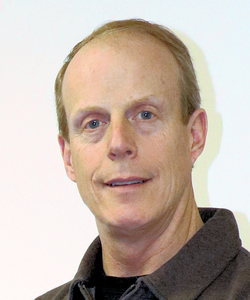 ARRL Lifelong Learning Manager to Keynote Ham Radio University 2020 in January ARRL Lifelong Learning Manager Kris Bickell, K1BIC, will be the keynote speaker at Ham Radio University 2020 (
ARRL Lifelong Learning Manager to Keynote Ham Radio University 2020 in January ARRL Lifelong Learning Manager Kris Bickell, K1BIC, will be the keynote speaker at Ham Radio University 2020 (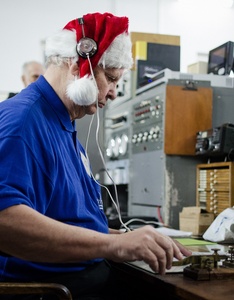 SAQ, Sweden's Alexanderson Alternator, Announces Scheduled Christmas Eve Transmission SAQ, the call sign of the 1920s vintage Alexanderson transmitter in Grimeton, Sweden, is set to be on the air for its annual
SAQ, Sweden's Alexanderson Alternator, Announces Scheduled Christmas Eve Transmission SAQ, the call sign of the 1920s vintage Alexanderson transmitter in Grimeton, Sweden, is set to be on the air for its annual 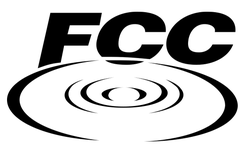 FCC Invites Comments on Digital AM Broadcasting Proposal The FCC has invited comments on a Notice of Proposed Rulemaking (
FCC Invites Comments on Digital AM Broadcasting Proposal The FCC has invited comments on a Notice of Proposed Rulemaking (







